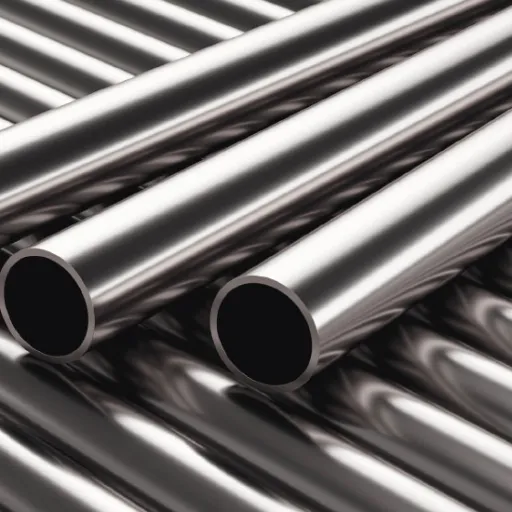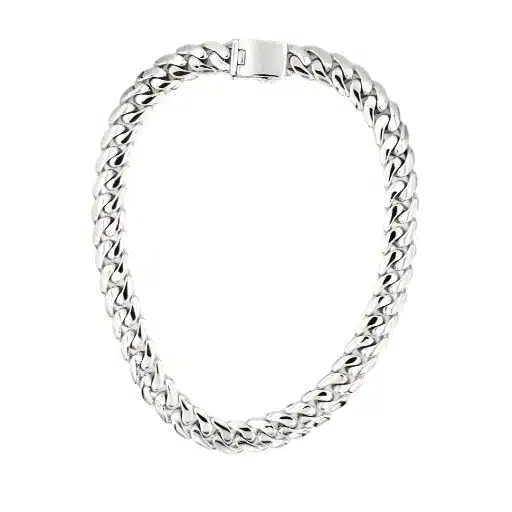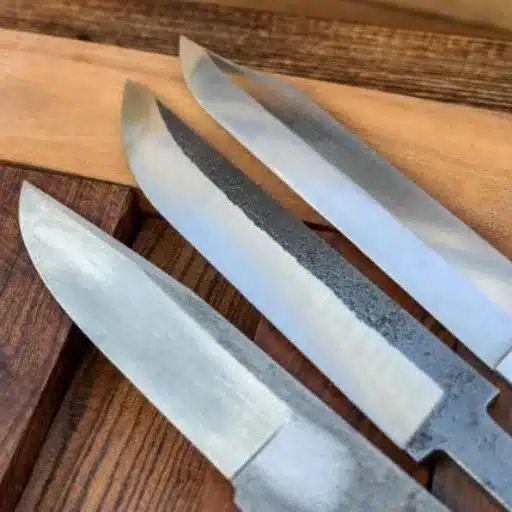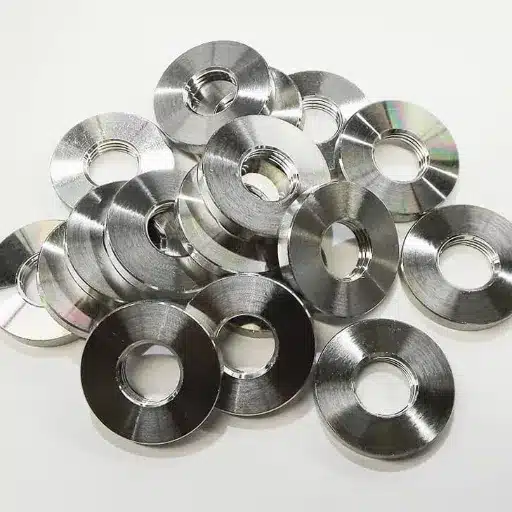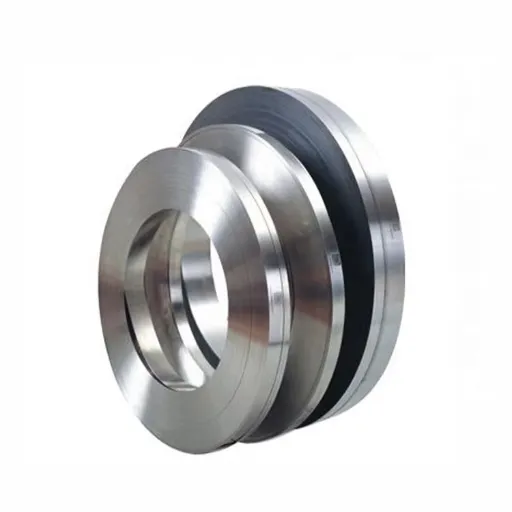High-strength low-alloy steels have revolutionized manufacturing for most industries, and one of the most advanced examples is the supply of CR340LA coils. The creation of these coils was designed to achieve maximum strength, optimum durability, excellent formability, and compatibility for all applications that require it. But what, precisely, makes these CR-340 LA coils so indispensable to, for example, the automotive and construction industries? In this article, we will examine the key characteristics that distinguish these coils, outline their standard and non-standard applications, and summarize their most significant advantages. Suppose you’re an engineer, a manufacturer, or even just someone who likes reading about strong steel. In that case, this guide will help you understand how and why HSLA CR340LA coils are reshaping material science and technology.
Understanding HSLA Steel
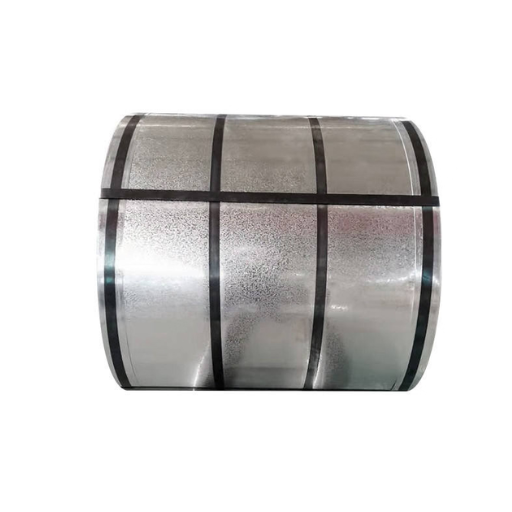
The aim of creating these high-variation head 2/3 order strength steels is to enable significant weight removal of the structure without sacrificing its strength. As opposed czar steel, carbon moist with higher amounts of weak heights, is virtually confined. Utilized in automotive and construction sectors, these steels are preferred because of their high strength-to-weight ratio, ability to withstand agents of wear and tear, and its ease of processing. In other words, HSLA CR340LA coils are a cook-through, generally available, reliable, and efficient technology that, without any complications, works effectively everywhere where high requirements are present.
What is HSLA Steel?
Safety standards are enhanced with high-strength, low-alloy steels (HSLA), which are alloy steels that offer greater mechanical capabilities and corrosion resistance than carbon steels, while maintaining the same weight of components.
Key Features of HSLA CR340LA Coils
HSLA CR340LA Coils Fabricated to Satisfy the Stringent Demands of Topmost Industries, including automotive, building, and fabrication. The following features and specifications make up the unique advantages of this construction:
- Toughness in Lightness: CR340LA Coils are particularly high in both tensile and yield strengths that are often represented by the minimum yield strength of 340 Mpa. This capability is useful for saving material thickness while maintaining structural stability.
- Quality against Rust Creep: The addition of chromium and manganese as alloying elements enhances the product’s resistance to wear, oxidation, and rusting; consequently, the products can withstand adverse environmental conditions for an extended period.
- High Workability: The coils in question feature remarkable workability capabilities, making them easy to stamp, bend, or shape. CR340LA is thus suitable in high-demanding applications, requiring good precision, such as car bodies and other parts.
- Enhanced Ability to Join: HSLA CR340LA steel focuses on enabling excellent joining processes, even for the most complex structures, which is critical in the construction or manufacture of intricate objects.
- Satisfactory surface quality: It is common in CR340LA coils to have smooth and even surface qualities, which serve the purpose of clean look requirements in applications such as outer parts of the vehicles.
- Industries Served:
- Automobile Industry: Predominantly structural and safety part and some other components are mostly used, to contribute to reducing the consumption of fuel.
- The Construction sector: lightweight structural members, cladding, and reinforcement members that require minimum weights of the materials.
- The engineering sector manufactures heavy-duty parts, such as machines, pipes, and other types of solids, using this material.
The category of HSLA CR340LA coils is a good strategy for resistance, long-term survival, and effectiveness, among other benefits, promoting maximum distance attainment in the use of the product.
Comparison with Other Steel Types
| Parameter | HSLA CR340LA | HR340LA | Plain Carbon Steel | Advanced High Strength Steel (AHSS) |
|---|---|---|---|---|
| Yield Strength (MPa) | ≥ 340 | 340–460 | 250–300 | 500–1200 |
| Tensile Strength (MPa) | 410–530 | 440–580 | 400–500 | 600–2000 |
| Elongation (%) | ≥ 20 | ≥ 18 | 20–30 | 10–20 |
| Corrosion Resistance | Moderate | Moderate | Low | High |
| Formability | High | Moderate | High | Moderate |
| Weldability | Excellent | Good | Excellent | Moderate |
| Cost | Medium | Medium | Low | High |
| Applications | Automotive, structural components | Automotive, machinery, construction | General construction, machinery | Automotive, aerospace |
| Surface Finish | Smooth (cold-rolled) | Rough (hot-rolled) | Varies | Smooth |
| Key Alloying Elements | Mn, Ti, Nb | Mn, Ti, Nb | None or minimal | Mn, Cr, Mo, Ni |
Mechanical Properties of HSLA CR340LA
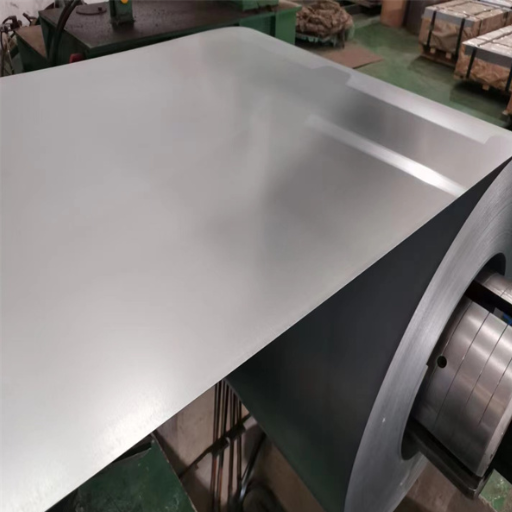
Known for their design, HSLA CR340LA steel has a very high mechanical resistance, which is a characteristic suitable to a wide range of uses. Main characteristics include:
- Yield Strength: Between approximately 340 MPa, which enhances resistance to deformation under force.
- Tensile Strength: Lying within the 440 to 590 MPa region, it is powerful for the performance in tension.
- Elongation: Ensures good elongation characteristics of the material, thereby assisting in forming activities.
- Weldability: Built to ensure easy welding with no loss in tensile stress or structural strength.
These properties enable a compromise between strength, weight, and fabrication, making HSLA CR340LA coils a viable alternative material.
Yield Strength and Minimum Yield Strength
In general, yield strength implies the stress value at which deformation of a material occurs by slipping, while minimum yield strength indicates the stress value and deformation at which no changes in the given stress are satisfied within the material. Acknowledging these two parameters is otherwise indispensable to HSLA CR340LA, that is why the following and other permissible parameters are defined at the appendix.
- Standard or Nominal Design Yield Stress is 340 MPa – Extreme cases ensure that the designed shape does not fail to hold its shape.
- Generally Expected Minimum Yield Stress is 310 MPa – Even in the worst case, this provides adequate strength.
- Tensile Stress at Yielding 350 MPa – Prevents early deformation.
- Yield Tensions 320-370 MPa – Provided as a range because the material production is always manufactured with high quality but within a certain tolerance level.
- Critical Stress 300 MPa – Myself. After this stage, the material will certainly undergo some deformation as it exhibits plastic behavior. These features highlight the quality of the HSLA CR340LA in terms of its usage under strict requirements efficiently.
These characteristics yield good results for HSLA CR340LA when operating under such conditions.
Cold Rolled vs. Hot Rolled Properties
| Parameter | Cold Rolled Steel | Hot Rolled Steel |
|---|---|---|
| Surface Finish | Smooth, polished | Rough, scaly |
| Dimensional Accuracy | High precision | Less precise |
| Strength | Higher due to strain hardening | Lower, softer |
| Formability | Moderate | High |
| Weldability | Excellent | Good |
| Corrosion Resistance | Moderate | Low |
| Thickness Range | Thin sheets | Thicker sheets |
| Cost | Higher | Lower |
| Applications | Automotive, appliances | Construction, machinery |
| Processing Temperature | Above the recrystallization point | Above recrystallization point |
Formability and Weldability
HSLA CR340LA grade is of wide use in modern industry due to its favorable formability and weldability characteristics. Varied application of this steel is possible due to the following peculiarities and qualities:
- High Ductility. The material is highly ductile, with the capability to form complex shapes without cracking or any form of failure. This can be used in designing components that have intricate contours.
- Supported by Conventional Welding Methods. Most conventional welding methods, such as resistance spot welding, laser beam welding, and arc welding, are suitable for the CR340LA. This characteristic makes it ideal for use in an industrial setting.
- Minimal Hydrogen Diffusion: There is a low likelihood of hydrogen-induced cracking, which ensures good safety regarding the welds’ performance.
- Uniform bendability: The uniform bend forming capacity of CR340LA precludes force releasing in high-strength circumstances, thus facilitating accurate manufacture.
- Minimal to Zero Preheat: This steel limits and sometimes eliminates the need for preheating before welding, thereby improving fabrication efficiency and energy conservation.
Due to these qualities, CR340LA is highly preferred in situations where good working properties are required alongside adequate strength.
Applications of HSLA CR340LA Coils
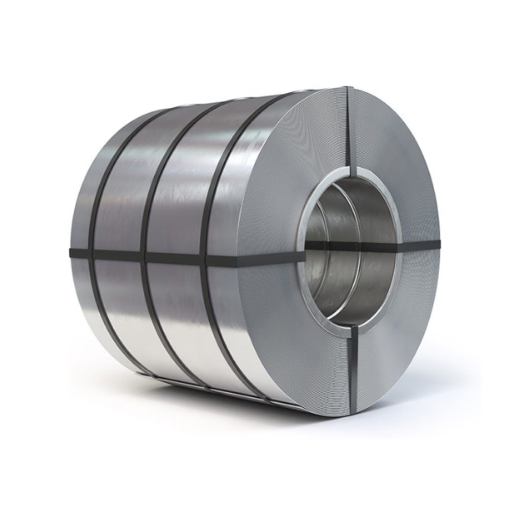
Sheet metal fabricated from HSLA CR340LA coils is particularly useful for the fabrication of thin-walled, high-strength components in various industrial sectors. Typical examples include in:
- Car Manufacturing Industries: Construction of the frame, door parts, and inner parts, which are reinforced and serve a supportive function, due to their high strength-to-weight ratio.
- Building and Construction: Preferred in lightweight constructions, walling systems and other components that provide support and are strong and easy to make.
- Household and Other Equipment: This applies in making the parts that are necessary for the effective use of household and other appliances.
Such uses explain why cR340LA is considered an efficient and functional material in various industrial productions.
Automotive Industry Usage
When it comes to steel specification, CR340LA is one of the most sought-after in the automobile sector due to its outstanding performance and functional flexibility. This means that various automotive parts can be manufactured using this steel, enhancing the safety, performance, and fuel economy of vehicles. The following are five primary uses of CR340LA in the automobile industry;
- Body Panels: Used for the outside body panels where vital formability and corrosion resistance characteristics are a must, together with the need for aesthetics.
- Structural Reinforcements: Ideal for manufacturing structural reinforcements, such as pillars and beams, to enhance crashworthiness and minimize risk to occupants.
- Chassis Components: Used for the production of chassis components such as cross members and any other frames. Hence, the steel is characterized by high stiffness and low weight, which contribute to the enhanced stability of the car as well as improved fuel economy.
- Seat Frames: Used for creating well-defined, comfortable-looking seat frames that are both safe and lightweight, allowing for weight reduction.
- Suspension Parts: Used extensively in the components of the suspension system, where elements are subjected to high stress and fragility is a great concern for both users and the manufacturer.
All these applications demonstrate the numerous capabilities of the CR340LA in driving the development of new vehicle designs and fulfilling the functional requirements of vehicles.
Construction and Structural Applications
CR340LA steel is especially valued in construction and structural engineering, primarily due to its outstanding mechanical properties like good tensile strength, toughness, and formability. Listed below are five areas of specific application, where they use CR340LA steel, which is of utmost importance to such processes:
- Steel Frameworks: Extensively used in erecting building frameworks, adding considerable strength and stability to such huge structures without adding much weight.
- Bridge Components: When constructing bridges, the parts are mostly made out of steel as it can withstand very high loads and other conditions such as corrosion and fatigue that cause damage.
- Roofing Panels: Generally, these are used in roof systems that require a lightweight material for easy installation and a strong material that can withstand adverse weather conditions.
- Piping Systems: Used in the structural pipe or any other pipe to ensure the strength and longevity, regardless of whether such pressure is present and it makes it appropriate for the water supply and such industrial pipes.
- Reinforced Beams: These beams incorporate this material to ensure a robust framework, especially in tall buildings and heavy civil works.
The discussed applications demonstrate that CR340LA steel is indeed an irreplaceable material for the harsher modern engineering & construction environments, demanding high-quality and accuracy.
Body Panels and Other Components
CR340LA steel offers several advantages in the automotive manufacturing industry, where it is primarily utilized for automotive body panels and other structural components. Its remarkable strength-to-weight ratio is why it has found favor in the industry for making thin and light but equally strong car components. literally, this can be achieved with the help of CR340LA steel. Statistically, advanced high-strength steel, such as CR340LA, reduces the weight of the vehicle structure by 25% and subsequently improves fuel economy, while also mitigating adverse environmental effects.
Additionally, due to the CR340LA grade’s excellent elongation percentage values, it enables the manufacture of body-difficult profiles in the inner door panels, the cowl, and other complex modern car forms. In addition, recent developments in manufacturing processes, such as forming and welding technologies, have enhanced the use of this material for parts with complex shapes. With an elevation of strength reaching 340 MPa, it allows CR340LA thicknesses that can effectively absorb loads without buckling or plastic deformation, which facilitates the durability of components within the vehicle structure, even in severe climates.
One additional factor that contributes to companies using CR340LA steel is its recyclability, which places a focus on cost-saving and eco-friendly initiatives in the automobile industry. Research shows that more than 90% of their average high-strength steels for HSLA were produced from scraps, which significantly reduced the negative impact of the vehicle manufacturing process. All of the above points to the fact that it is imperative to incorporate flexible and adaptable quality sheets, such as HSLA CR340LA coils, into automobile manufacture.
Chemical Composition of HSLA CR340LA
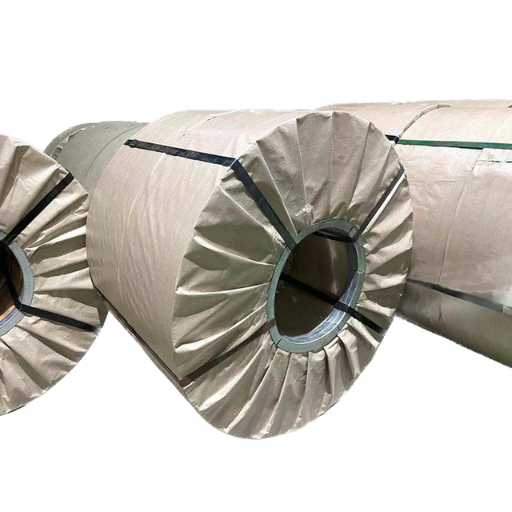
HSLA CR340LA coils are mainly composed of iron, carbon, manganese, and other micro-alloying components, as well as significant niobium, titanium, and vanadium additions. Such combinations increase the alloy’s hardness and elasticity while still allowing it to weigh very little. This is why it is vital to maintain low carbon content, thereby enhancing the metal’s ability to be transformed while avoiding cracking. At the same time, manganese provides the necessary tensile support. Their constituents are designed accordingly to achieve the best performance in the vehicle components they are used in.
Alloying Elements and Their Effects
A variety of alloying elements is included in high-strength low-alloy steels (HSLA) or advanced high-strength steels (AHSS) to enhance their mechanical performance for specific applications further. This section elaborates on various alloying elements and the significance of each aspect why it is conducive for composite performance:
1. Carbon (C):
An increased proportion of carbon content makes stronger steel. While carbide-forming elements form carbides, chromium strengthens the surface and wear properties of steel. However, that element is controlled in AHSS to maintain weldability and prevent excessive brittleness. For example, AHSS are characterized by a carbon content of around 0.25% to 0.3% or even lower in some cases; this amount serves to support higher stresses without causing excessive difficulty in bending.
2. Manganese (Mn):
Enhancing the benevolence of this action, steel’s manganese content improves its tensile strength and promotes toughening, while also strengthening the steel’s ability to form martensite. In certain AHSS, the acceptable content of manganese is as high as 2%. The reason may also account for energy savings.
3. Niobium (Nb):
The incremental incorporation of niobium enables further reduction in grain size, consequently enhancing toughness and strength. Niobium is relatively trace, even in augmented elements, being present in the range of 0.01–0.05% and active in the postponement of recrystallization and enhancement of creep resistance.
4. Titanium (Ti):
The integration of titanium also forms carbonitrides or simply nitrides, which play a similar role, resulting in far less grain downsizing and particle dispersion due to the size of these particles. It also serves an internal thermal purpose, strengthening the hot-stress-exposed alloy even further. Usual content is 0.01–0.03%.
5. Vanadium (V):
To explain in more detail the enhancement due to vanadium, the addition forms less coarse carbides, as most/all of the vanadium atoms occupy interstitial sites, which directly enhances both toughness and compressive strength. Such steels typically fall within the range of 0.03–0.10%. These types of steel, which incorporate vanadium, are particularly desirable in circumstances that require excellent impact resistance.
6. Silicon (Si):
Silicon is added as a strengthening agent and also serves as a deoxidizer. Up to 2% silicon is added in AHSS to enhance the formation of ferrite and reduce scaling during the heat treatment processes.
7. Chromium (Cr):
Additionally, chromium is included to enhance the corrosion and oxidation resistance without compromising its strength. Depending on the type of AHSS grade produced, the chromium content may vary between 0.5% and 1.0%.
8. Aluminum (Al):
Aluminum is mainly used as a deoxidization agent. Further, Aluminum refinement aids the improvement of toughness of bulk grains as well as the quality of external surface.
Altering characteristic properties of micro-alloying elements in different AHSS grades – relevant data:
- Yield Strength: For several high-strength grades of steel, yield strength is increased by the addition of micro alloying elements niobium and titanium, which amounts to nearly 150 MPa.
- Tensile Strength: Furthermore, vanadium and niobium grains, as well as non-metallic impurities, further enhance the steels, resulting in tensile properties exceeding 800 MPa in several dual-phase steel grades.
- Ductility: Further addition of Manganese, however, ensures some degree of plasticity in most steels with a tensile strength above 1000 MPa, making it possible to form complex shapes without fracture.
- Corrosion Resistance: The addition of chromium and aluminum improves atmospheric corrosion resistance, which is beneficial in automotive applications where parts are exposed to the elements.
With the alloying elements and proper heat treatment, various grades of AHSS are developed that meet the requirements of lightweight, strong, and long-lasting automobile construction. The elements are synergized in proportions specific to the needs of advanced structural innovations. Such developments revolutionize the safety and fuel consumption of vehicles.
Comparison with GMW3032M Standards
| Parameter | HSLA CR340LA | GMW3032M Standards |
|---|---|---|
| Yield Strength (MPa) | ≥ 340 | 340–460 |
| Tensile Strength (MPa) | 410–530 | 440–580 |
| Elongation (%) | ≥ 20 | ≥ 18 |
| Surface Finish | Smooth (cold-rolled) | Rough (hot-rolled) |
| Formability | High | Moderate |
| Weldability | Excellent | Good |
| Corrosion Resistance | Moderate | Moderate |
| Thickness Range (mm) | 0.3–3.0 | 1.5–12.0 |
| Key Alloying Elements | Mn, Ti, Nb | Mn, Ti, Nb |
| Applications | Automotive, structural components | Automotive, construction, machinery |
Coating Options: Galvanized and Hot Dipped
Advanced high-strength low-alloy steel (AHSS) utilizes coatings to protect it from corrosion during manufacturing or after. Galvanizing and some forms of coatings, however, are used supplementarily to enhance the output by providing increased wear resistance and environmental protection for the structural framework (made with steel), particularly owing to the demands from the automotive and construction industries. The following highlights the specific use case scenarios for five widely adopted coatings:
- Hot-Dip Galvanizing (HDG)
- The process of hot-dip galvanizing a metal entails immersing it in a molten zinc bath.
- This process enables users to achieve high corrosion resistance by applying a thick layer of zinc.
- Found in automotive frames and other structural elements very frequently.
- Electro-Galvanized Coating (EG)
- An electroplating technique is used in this regard, and the coating applied is thin and composed of zinc.
- Very effective, especially in cases where the application requires a clean surface, which is usually the interior of the vehicle’s panel.
- Used for corrosion resistance, however, to a lesser extent than hot-dipped galvanizing.
- Hot-Dip Galvannealed Coating (GA)
- This is tinplated HDG that has been turned in a furnace and processed after galvanizing into sheet metal.
- Provides a more weldable intermetallic zinc-iron alloy layer on the surface of the HD sheet.
- Constitutes a favorite material for additional stiffeners in car body parts.
- Aluminum-Zinc Alloy Coating (Galvalume)
- Utilizes both zinc and aluminum to create a surface coating that resists corrosion and is more durable.
- Goof is a roofing material or suitable for building applications due to its weathering properties.
- Resistant to high temperatures and lasts significantly longer.
- Zinc-Magnesium Coating (ZM)
- Enhances the properties of the zinc film by incorporating aluminum and magnesium.
- Provides more performance at a lesser thickness available with the tougher solution.
- It is mostly used in vehicles to make it lighter and hence less harmful to the environment.
These coatings meet various needs and constraints concerning performance and the environment, and, as such, support the development of material technology for industries where the demand is high for performance.
Market Trends and Sourcing Tips
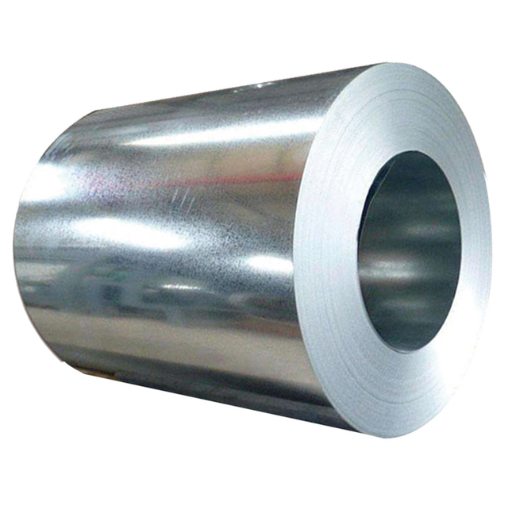
The current and forecasted growth within the high-performance coating sector is closely linked to the automated processes of various industries, including the production of cars, car components, houses, walls, and other related industries. Customers, naturally, understand or will require a coating classified as eco-friendly, yet much lighter yet extraordinarily resistant. Recent trends indicate an orientation towards new generation coatings, such as zinc and magnesium coatings, which are considered superior in terms of chemistry. Along similar lines, innovative coatings, also known as intelligent coatings, are being heavily researched and developed to enhance their characteristics, including self-healing, high-temperature resistance, and corrosion resistance.
Look for reputable suppliers who consistently provide high-quality products and services, because it is more challenging than adhering to theories. Verify that certifications and guarantees are in place, and that there is sufficient production capacity to meet project requirements promptly. Nurturing relationships with proven suppliers helps foster trust, develop new coating technologies, and remain at the forefront of this advanced industry.
Current Market Trends for HSLA Steel
There is a growing demand for High-Strength Low-Alloy (HSLA) steel in several aspects, primarily due to its enhanced features and cost advantages. Present findings from market studies indicate that the market size of HSLA steel is expected to grow at an approximate CAGR of 7% over the period from 2023 to 2030. The increasing levels of adoption in industries –such as automotive, construction, oil & gas, and even shipbuilding – largely explain this noticeable expansion.
An emerging factor observed during this expansion is the tendency to manufacture equipment with lightweight materials, particularly within the vehicle sector. With changes in regulations regarding emissions and fuel efficiency, many vehicle manufacturing companies are turning to HSLA steel for weight reductions without compromising strength and structural properties. In addition, construction companies are utilizing the material’s lightweight properties to enhance the strength of their designs, creating more efficient and safer structures, especially in areas vulnerable to earthquakes.
In terms of geography, the Asia Pacific region is the most dominant in HSLA steel consumption. It can be attributed to increased urbanization and industrialization in China and India. Both countries are undergoing massive infrastructure development, which requires low-cost and durable raw materials. In contrast, the economies within regions of Europe and North America have advanced steel production technologies like electric arc furnaces EAFs thereby reducing emissions in their respective steel industries.
Another vital market aspect is the development of environmentally friendly, low-carbon HSLA steels to satisfy green commitments. Leading producers have been focusing on R&D and every possible way to mitigate the harmful effects of steel production while improving its structural benefits.
All these aspects collectively point to the promising HSLA steel industry as a lubricant that can take indispensable measures to enhance performance and improve environmental protection, which every enterprise strives for.
Tips for Sourcing High-Quality HSLA CR340LA Coils
- Confirm Material Parameters
Checking for correct values of HSLA CR340LA coils, including such technical parameters as yielding capacity, tensile capacity, elongation, etc. This is of utmost importance in ensuring both the structural and performance desirability of the components in action.
- Evaluate Gold Suppliers
Source materials from reputable and accredited suppliers with a proven track record of successful material supply. Certifications such as ISO 9001 and any other applicable certificates should be presented to establish the supplier’s authenticity in terms of quality assurance and supply reliability.
- Hydraulic Cover Mill Test Certificates
Ask for mill test certificates, at least, to be able to countercheck about the expected parameters of the material in terms of chemistry and mechanics. This guards against nonconformance of coils with any industry standards and bespoke project needs beyond the quality assurance framework.
- Examine Surface Condition & Production Tolerances
Perform visual examination to guarantee the appearance, uniform thickness, length, and other production tolerances of the coils being delivered. To accommodate these manufacturing processes, HSLA CR340LA coils of high quality should have a uniform surface appearance and dimensions.
- Seek Sustainable Suppliers
Choose to work with suppliers who are actively engaged in reducing environmental impacts through green production systems. Companies that curb the activities that lead to the enhancement of atmospheric concentration of greenhouse gases or enterprises that prefer recycling materials are good practice of global concern and will help your business achieve environmental objectives.
Considerations for Pricing and Availability
When analyzing the prices and availability of certain materials, such as coils, it is relevant to consider both current market trends and factors based on the supplier. Global commodity prices, such as those of metals like steel or aluminum, have experienced a significant shift due to geopolitical crises in certain regions, disruptions in supply chains, and changes in demand. However, there was some respite as of the year to date; that is, according to market information, steel prices have reached a quasi-equilibrium in 2023 after some steeply rising prices in recent years, while aluminium prices have held steady due to rising energy costs and the unavailability of raw materials.
Availability may also be affected by a particular region’s capacity to manufacture goods and the efficiency of its transport carriers. There may be a shorter delivery time with reduced lead times, particularly for suppliers with more developed infrastructure or those located near ports. Additionally, bulk or long-term purchase agreements with suppliers often result in lower prices and a higher guarantee of materials being available, given the prevailing global situation. Keep abreast on developments by tracking, for instance, London Metal Exchange (LME) price movements as well as reading extensive industry reports about the current situation. This method enables the use of optimal strategies, given the available market pragmatism.
References
- SteelPro Group: Low Alloy High Strength CR340LA Steel Coil GMW3032M – Provides details on CR340LA steel coils for automotive applications.
- SSAB Domex: SSAB Domex 340LA – High-strength low-alloy steel – Offers specifications and applications of Domex 340LA steel.
- AHSS Guidelines: Microalloy Archives – Discusses the microstructure and properties of HSLA steels.
Frequently Asked Questions (FAQ)
What are the mechanical properties of Cr340La steel?
Cr340la steel exhibits high strength and excellent formability, making it ideal for various industrial applications, particularly in automotive body panels and structural components. Its yield strength is significantly enhanced due to the alloying elements present in its chemical composition.
How does cold-rolled steel differ from hot-rolled steel?
Cold-rolled steel undergoes processing at room temperature, resulting in a smoother surface finish and tighter tolerances compared to hot-rolled steel, which is processed at elevated temperatures. This difference affects their mechanical properties and suitability for specific applications.
What is the significance of yield strength in hsla steel?
Yield strength is a critical mechanical property of HSLA steel, indicating the maximum stress it can withstand without permanent deformation. High-strength low-alloy steels like hsla are designed to provide superior performance in demanding applications such as automotive manufacturing.
Can cr340la steel be welded?
Yes, cr340la steel can be welded, but it is essential to follow specific welding procedures to maintain its mechanical properties and structural integrity. Proper preparation and post-weld treatments, such as annealing, can enhance the quality of the welds.
What are the benefits of using galvanized steel in automotive applications?
Galvanized steel provides excellent corrosion resistance, making it an ideal choice for automotive applications where exposure to harsh environments is common. The zinc coating protects the underlying steel, enhancing its durability and longevity in body panels and structural components.
How does the chemical composition of rolled hsla affect its performance?
The chemical composition of rolled hsla steel significantly influences its mechanical properties, including toughness, yield strength, and formability. By adjusting alloying elements, manufacturers can tailor the performance characteristics of the steel to meet specific application requirements.
What are the advantages of using high-strength low-alloy steel?
High-strength low-alloy steel provides a combination of increased strength, improved corrosion resistance, and enhanced formability. This makes it an excellent choice for automotive body panels and other structural applications where weight reduction and performance are critical.
What is the typical thickness range for cold-rolled steel sheets?
Cold-rolled steel sheets are typically available in a thickness range from 0.2 mm to 3 mm, although custom thicknesses can be produced. The precise thickness required often depends on the specific application and the desired mechanical properties.
What is the role of surface treatments in enhancing the properties of steel coils?
Surface treatments, such as hot-dip galvanization or painting, enhance the corrosion resistance and overall durability of steel coils. These treatments also enhance the aesthetic qualities of the steel, making it suitable for visible applications such as automotive body panels.


